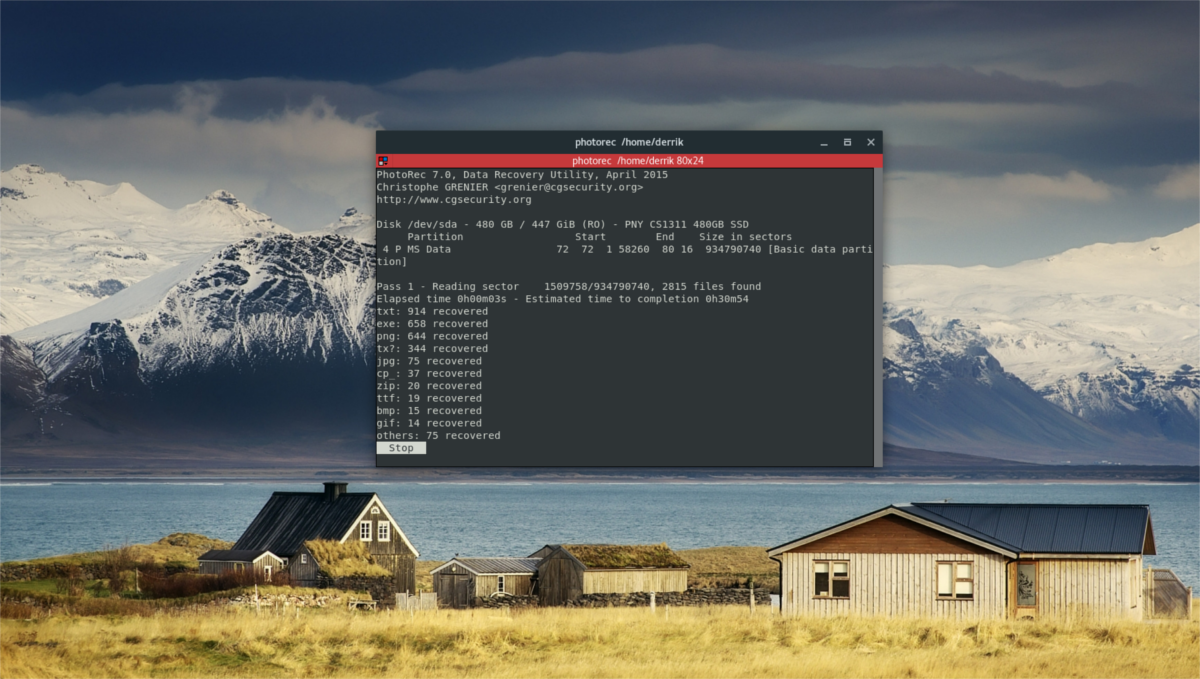There are lots of other ways to recuperate deleted recordsdata on Linux. Nevertheless, essentially the most person pleasant possibility is a terminal device known as Photorec. With it, customers can simply scan partitions and full onerous drives for misplaced recordsdata. Better of all, the device works with all various kinds of file programs, not simply Linux ones. Right here’s the right way to use it.
SPOILER ALERT: Scroll down and watch the video tutorial on the finish of this text.
Set up
Photorec isn’t one thing that installs by itself. As a substitute, it normally comes bundled with Testdisk, a strong set of restoration instruments that enables the person to recuperate information, again it up and duplicate it in several methods. The software program is extensively in use on Linux, particularly in enterprise Linux circles. To set up it to your Linux PC, open up a terminal and enter the next command to get it.
Ubuntu
sudo apt set up testdisk
Debian
sudo apt-get set up testdisk
Arch Linux
sudo pacman -S testdisk
Fedora
sudo dnf set up testdisk
OpenSUSE
sudo zypper set up testdisk
Different Linuxes
Likelihood is, your Linux working system has Testdisk, in addition to Photorec. Nevertheless, if for some motive this isn’t the case, consider visiting the official website, and downloading the program directly. The builders make this system accessible to generic Linux distributions within the type of a tar.bz2 archive file. On the web site, it says that the software program helps Linux distributions with kernels 2.6 and later.
Clearly Linux distributions in 2017 are very removed from kernel 2.6. That stated, seeing the way it’s a terminal program, customers should not have any hassle working it.
Recover Information From Arduous Drive
To recuperate information with the Photorec device open up a terminal window. First, achieve root entry within the terminal. The terminal wants root, as information restoration doesn’t work that properly with out superuser privileges. Achieve a root shell with this command:
sudo -s
With root gained, begin up Photorec:
photorec
Because the Photorec app begins up within the terminal, it’ll instantly scan your complete system for block units (onerous drives and different mass storage units). The scan occurs very quick, and when it finishes, an inventory will seem. Look by the record of drives to find out the place you’d wish to scan for lately deleted recordsdata and folders. Use the arrow keys to focus on an possibility, then hit the enter key to proceed.
Contained in the chooser, Photorec will show all partitions on the drive you want to run a restoration on. To recuperate from your complete drive, discover the choice “[whole drive]” and hit the enter key.
On the subsequent web page, this system asks what the file system is. Although Photorec goes to scan your complete onerous drive, nonetheless choose the file system. If the onerous drive comprises a number of file programs, attempt to specify the biggest one.
For Linux programs, choose “Ext2/ext3”. For all the things else choose “other”.
Word: Run lsblk –fs within the terminal to find out what your onerous drive’s file system is.
On the subsequent web page, Photorec asks the place to scan. It can look by the onerous drive, and present varied completely different directories to scan. In case you’re sure you recognize the place the file was deleted, use the arrow keys to pick the precise location the place this system ought to scan. If not, press c on the first possibility it reveals within the record. This feature will scan all the things.

After choosing the listing, sit again and wait. The scan could take fairly a little bit of time (all of it is dependent upon how briskly and large your onerous drive is). When Photorec finishes, it should place a number of recovered recordsdata within the person’s residence listing. Take note, this isn’t one folder. As a substitute, there are numerous completely different ones. Every of the folders share the title “recup”, adopted by a quantity.
Entry these recovered recordsdata by navigating to the “recup” folders in your house listing.
Recover Information From Particular person Partition
Photorec does very properly to find lately deleted recordsdata, by scanning all partitions on a whole onerous drive. Generally, nonetheless, it’s higher (and sooner) to scan one partition at a time. Right here’s the right way to do it.
Step 1: launch Photorec like outlined above within the directions.
Step 2: choose the person onerous drive to scan within the menu.
Step 3: choose the person onerous drive partition to scan.
Step 4: Within the terminal, run lsblk –fs to find out the kind of file system the partition has.
Then, in Photorec, specify the file system sort.
Step 5: spotlight the listing to scan in on the onerous drive partition, after which choose the c button to begin the method.
Sit again and look forward to the scan to finish. When its completed, go to your property listing. All recovered recordsdata will likely be situated in folders beginning with the phrase “recup”.
Conclusion
Shedding information is horrible, and may actually break your day. Fortunately, instruments like Photorec exist, and make getting these valuable recordsdata again a actuality. In case you’ve ever unintentionally deleted some issues in your Linux PC, do try this program. You’ll be joyful you probably did!
